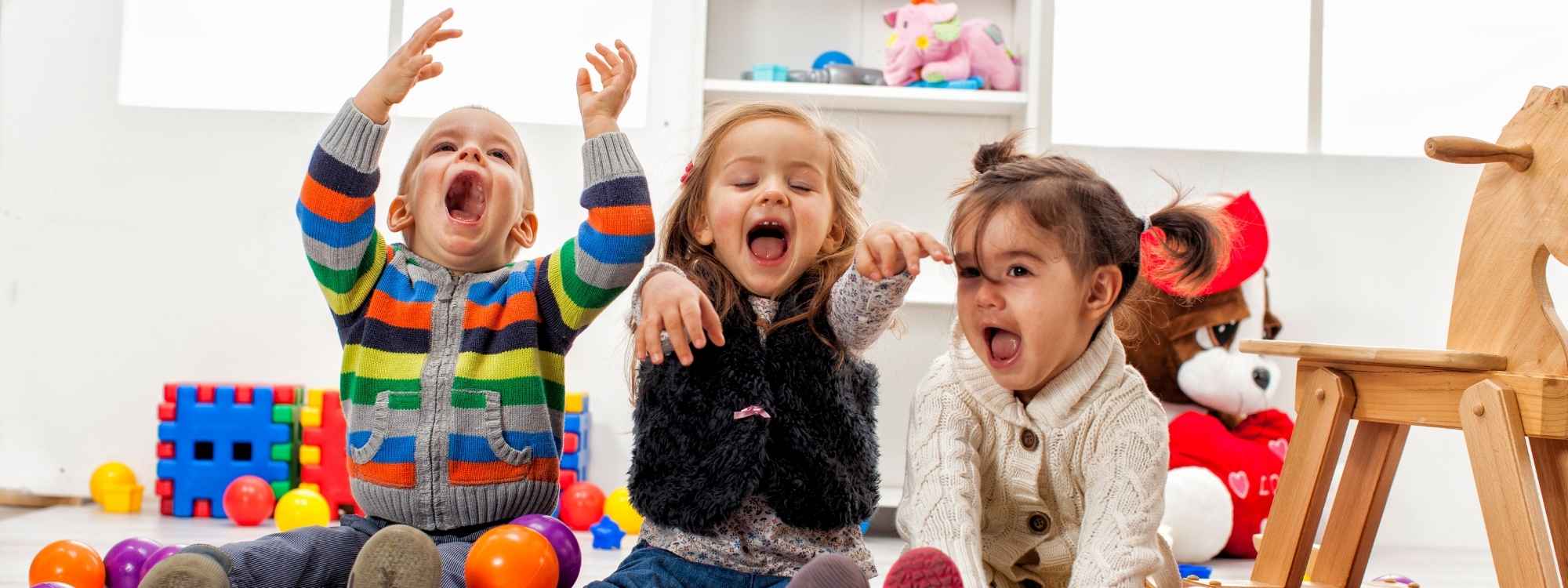Best Books for Preschoolers with Autism to Inspire
Reading books for preschoolers with autism can be a powerful, joyful experience that helps build language, social skills, emotional understanding, and connection. While every child is unique, selecting the right books can open a world of opportunity, offering new ways to communicate, engage, and explore the world through stories.
In this guide, we’ll highlight some of the best books for preschoolers with autism, explain why they work, and offer tips for creating a reading environment that supports attention, regulation, and skill-building.
Understanding Autism and Reading Needs
Children with autism spectrum disorder (ASD) often benefit from reading experiences that are visual, repetitive, and aligned with their interests. Books with strong illustrations, predictable storylines, and clear emotional cues can help autistic kids make sense of social situations and language patterns.
Picture books are particularly effective, as they combine visual and verbal cues that support comprehension and engagement. Stories that reflect real-life scenarios, include emotional expressions or depict sensory experiences can help young children understand their responses and build social-emotional language.
The right reading approach can support:
- Social and communication skills through exposure to dialogue, emotional expression, and turn-taking.
- Life skills such as self-awareness, empathy, and emotional regulation.
- Parent-child bonding provides a calming routine and an opportunity for shared interaction.
With the right guidance, caregivers and educators can choose books that support both the joy of storytelling and the therapeutic needs of autistic children.
Recommended Books for Autistic Children
Here are five thoughtfully chosen books that are especially suited for preschoolers on the autism spectrum. These stories were selected for their inclusive themes, calming narratives, sensory awareness, and emotional accessibility.
The Boy Called Bat by Elana K. Arnold
This heartwarming story follows a young boy on the autism spectrum who forms an unexpected bond with a baby skunk. Although written as a chapter book, the simple language, and emotional depth make it suitable for preschoolers when read aloud with caregiver support. The story gently introduces themes of compassion, special interests, and navigating social dynamics, all through the lens of a relatable main character.
Wiggles, Stomps, and Squeezes by Lindsey Rowe Parker & Rebecca Burgess
This picture book offers a beautifully illustrated, sensory-rich experience from the perspective of a child with autism. It validates the feelings that come with sensory overload and introduces strategies for managing those feelings. The rhythmic language and relatable experiences help both autistic and neurotypical children understand different sensory needs.
A Friend for Henry by Jenn Bailey & Mika Song
This moving story follows Henry, a quiet and observant boy with autism, as he navigates classroom dynamics in search of friendship. The narrative portrays social situations with care and empathy, helping readers recognize the importance of acceptance, patience, and understanding. Its clear language and emotional pacing make it a gentle introduction to the complexities of friendship.
Breathe Like A Bear by Kira Willey
While not specifically about autism, this board book introduces mindfulness through simple breathing exercises. Each page offers a calming prompt paired with illustrations that encourage children to pause, stretch, or breathe. This is especially helpful for autistic children learning to self-regulate and manage transitions.
Arnie And His School Tools by Jennifer Veenendall
Arnie, a young boy with sensory differences, uses “school tools” to help him stay focused and calm. This children’s book is a fantastic way to introduce the concept of sensory support and self-advocacy in the classroom. The story is empowering, teaching kids that it’s okay to need different tools to succeed.
Each of these books offers something unique, whether it’s emotional modeling, sensory support, or social storytelling, making them excellent choices for early learners on the autism spectrum.
Therapeutic Benefits of Reading
Reading doesn’t just build vocabulary, it also creates a foundation for emotional, cognitive, and behavioral growth. For autistic preschoolers, books can be both a comfort and a tool.
Reading together can:
- Reduce anxiety and stress by establishing a predictable, calming routine.
- Model social interactions, teaching children how to respond to emotions or challenges.
- Promote empathy and understanding by helping children see the world from another perspective.
- Support communication, even in nonverbal children, by pairing visuals with repetitive language or gestures.
When stories are tailored to a child’s developmental stage and interests, they become more than entertainment, they become an avenue for learning and connection.
Creating a Positive Reading Experience
Making reading an enjoyable experience for autistic preschoolers starts with understanding how they engage with stories and visuals. Here are some best practices for creating a supportive and effective reading routine:
- Set up a calming reading space: Choose a quiet area with soft lighting, comfortable seating, and minimal distractions. Familiar routines help reduce anxiety.
- Choose books that match their interests: Whether it’s animals, trucks, or textures, interest-based books keep attention longer and support comprehension.
- Use visual aids: Point to illustrations, use gestures or incorporate visual schedule cards to help your child follow along.
- Encourage interaction: Let your child point to characters, repeat words, or even act out parts of the story. This boosts engagement and comprehension.
Reading should feel safe and predictable. Even a few minutes a day can make a significant difference in a child’s emotional and language development.
Sensory-Friendly Reading Options
Some autistic children are highly sensitive to visual, auditory, or tactile input. Adapting your reading environment and materials can help minimize sensory overload while maximizing enjoyment.
Here are some options to consider:
- Board books with textures: Books that include soft fur, rough patches, or flaps provide tactile input and engagement.
- Books with simple, repetitive language: Predictable rhythm and clear sentence structure support understanding.
- Digital reading options: E-readers or tablets allow font size, color, and brightness adjustments to suit visual sensitivities.
- Create a sensory reading nook: Use beanbags, weighted lap pads, or fidget tools to make reading feel physically comfortable.
The goal is to reduce stress while offering a pathway to connection and exploration through books.
Managing Emotions and Behaviors through Reading
Books can be a gateway to emotional regulation and behavioral understanding. For children with autism, reading about emotions, problem-solving, and self-expression in a story format can make abstract concepts more concrete.
You can use reading to:
- Model how to handle frustration or sadness: Choose stories where characters work through big emotions.
- Prepare for transitions: Read books about bedtime, going to school, or visiting new places to reduce anxiety.
- Encourage emotional expression: After reading, ask your child how the character felt or what they might do in the same situation.
- Establish reading as a calming routine: Use stories to wind down after a stimulating activity or before bedtime.
Books provide a low-pressure opportunity for learning new behaviors and practicing emotional control.
Conclusion
Reading with autistic preschoolers goes beyond storytelling. It’s an opportunity to nurture communication, trust, and developmental skills in a comforting, low-pressure setting. By choosing books that match your child’s interests, accommodate their sensory preferences, and encourage social and communication growth, you can turn reading into a positive, enriching part of your daily routine.
Looking for expert guidance in supporting your child’s development through reading and play? Champions ABA offers personalized therapy plans that incorporate communication, social-emotional learning, and sensory strategies tailored to your child’s needs. Our experienced team works alongside families to help autistic children build confidence and essential life skills, starting at home. Call (877) 242-1744 or visit our website today to learn how we can support your preschooler’s growth through compassionate, individualized care.
FAQs
How to treat a 3-year-old with autism?
Treating a 3-year-old with autism involves early intervention strategies that focus on communication, behavior, sensory integration, and social development. Applied Behavior Analysis (ABA), speech therapy, and occupational therapy are often part of a comprehensive plan. Consistency, patience, and structured routines are key to supporting the child’s growth.
What is the best book to tell a child they have autism?
Books like My Brother Charlie by Holly Robinson Peete and All My Stripes by Shaina Rudolph can help introduce the concept of autism in a child-friendly way. These stories use positive, inclusive language and relatable characters to explain neurodiversity, making it easier for children to understand themselves or their siblings.
How do you teach an autistic child in preschool?
Teaching an autistic child in preschool requires structure, visual support, individualized lesson plans, and sensory accommodations. Focus on building communication and social skills through interactive play, routine-based learning, and interest-driven activities. Collaboration with therapists and families ensures the child’s needs are consistently supported.
How to discipline a child with autism?
Discipline for autistic children should be rooted in understanding, not punishment. Focus on positive reinforcement, clear expectations, and proactive strategies to prevent problem behaviors. Redirecting attention, offering choices, and using visual cues or social stories can help teach appropriate behaviors in a supportive way.



